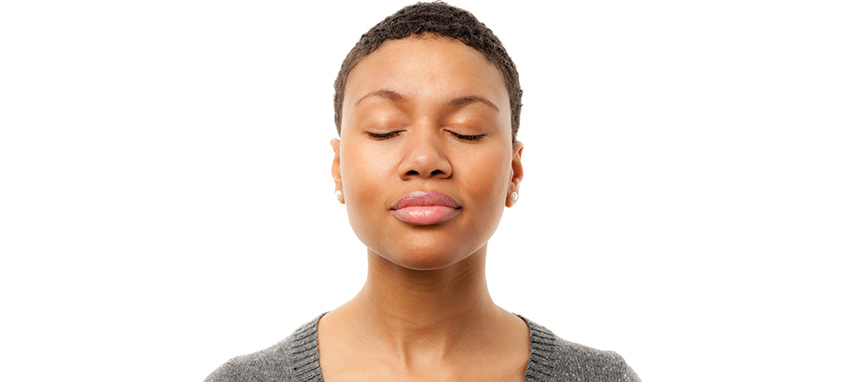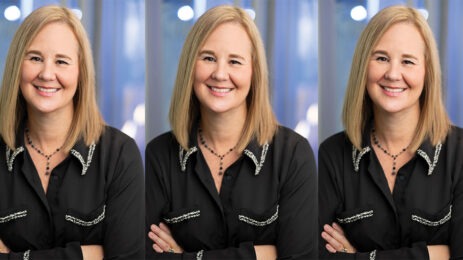Pity the poor creatures whose eyes see only black and white. Color has a constant impact on us. The golden grandeur of sunset. The reassuring green of a traffic light. The brown vivacity of a lover’s eyes.
But what is color, anyway? You might think of it as a fixed attribute, a simple fact. As in, “That vase is purple.” But is it, really? Light detectable by the human eye consists of light waves of varying length and vibration. We see a specific color because of the eye-brain response to the light waves emitted or reflected by that vase. It’s our response to the light waves we see as the color purple.
In other words, color is mostly within us, in our bodies.
“Color is electromagnetic energy on the same spectrum as microwaves or X-rays,” says Angela Wright, a London-based researcher who has studied color for 35 years. She traces her fascination to growing up in her family’s hotel, where she noticed guest behavior was affected by the colors of the rooms.
“Although response to colors is 80 percent unconscious, they affect you physiologically as well as psychologically,” she says. “Blind people can detect colors using their fingers. Try it. Blindfold yourself and touch identically sized cards of color. Some feel darker or warmer, or you might just say, ‘This one feels like yellow.’”
A growing body of research indicates color can change how we feel—about our surroundings, other humans and ourselves.
For meeting planners, the implications are obvious: Your color choices in everything from decor and lighting to flowers and table designs can influence attendees’ moods and productivity. Yet as important as your next meeting or event is, let’s focus on you and your attendees. Here’s how to tap into the power of color to promote well-being. And perhaps even healing.
Know Who You Are
Color can provoke different feelings depending on who you are, your life experiences and where you live. For instance, in China white signifies mourning, and thus sadness. Green and gold are the colors of paradise for Muslims. Some responses may be hardwired because we evolved from hunter-gatherers. (Thus, red=fire=danger and green=no famine=harmony and balance.)
Wright believes we all fall into one of four personality types based on shared responses to color variations: morninglight (Bill Clinton is one), dreamlight (Nelson Mandela), firelight (Julia Roberts) and starlight (Oprah Winfrey).
Diagnose Yourself
What is it you seek? More energy? Red is stimulating. Research has shown red excites the nervous system, boosting heart rate, respiration and blood pressure—a no-no if you have hypertension! According to Jacob Olesen, who publishes the website color-meanings.com from Copenhagen, red can help alleviate depression and enhance sexual vitality. Pure blue light, on the other hand, has the opposite effect, calming the parasympathetic branch of the autonomic nervous system.
If weight loss is your goal, Kate Smith, known as the chief color maven at Sensational Color consultancy, says green inspires healthy food choices and triggers you to think of vegetables and fresh foods.
“Even better, green food and a green plate will encourage you to take larger portions of these nutritious, healthy foods,” she says.
Smith also weighs in on another essential component of health—a good night’s sleep. “A study conducted by Travelodge UK found that blue walls are the best promoters of sleep, followed by yellow, green and silver,” she says. “The worst colors for sleepy time are red, gray, beige, brown and purple.”
Olesen has developed a palette of healing colors. In addition to red and blue, it includes the following five colors.
Orange encourages playfulness and happiness, important mental stimuli for healing.
Yellow helps detoxify the body and mind, and is recommended for patients with skin problems. Beware of overuse, which can affect digestive health.
Green restores equilibrium in the body and is especially beneficial for the heart, lungs and circulatory system.
Pink soothes like a nurturing feminine spirit.
Purple, traditionally associated with spirituality, is linked to the cerebral and nervous systems.
Add Color to Your Meditation
You may already be meditating or following other mindful practices to de-stress and promote health. Try adding color breathing. Here is Olesen’s technique:
Sit in a quiet room and close your eyes.
Slowly breathe in and hold your breath for eight counts, then slowly exhale.
Repeat until your mind quiets.
Gently focus on the place between your eyebrows, where the pituitary gland is located (as is the “third eye” of Hindu practice).
Let colors flood your consciousness and entire body.
“Use these healing colors,” Olesen says, “and bring peace, joy and vitality to you and your loved ones.”




